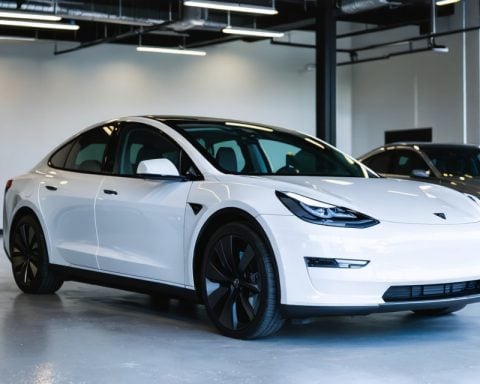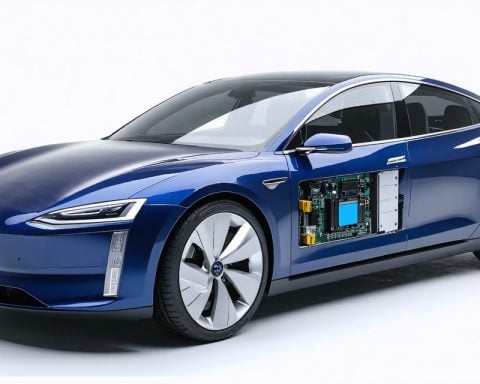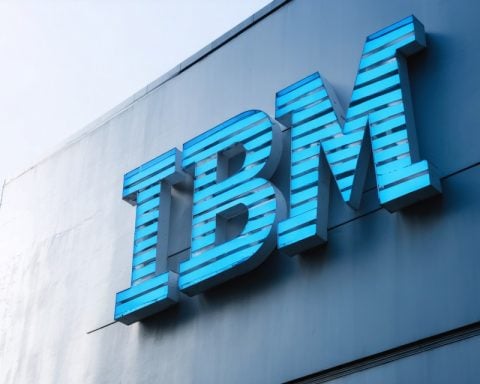- The EV battery recycling market is projected to reach nearly $24 billion by 2035, with a rapid growth rate of 40.9% annually.
- Recycling initiatives in Europe, driven by strict regulations, are fostering circular economies and reducing raw material imports.
- Automakers partnering with recycling firms aim to enhance local supply chains, promoting sustainability and cost-effectiveness.
- Lithium recovery, spearheaded by collaborations like BMW’s, minimizes mining reliance and supports eco-friendly automotive progress.
- Lithium Iron Phosphate (LFP) batteries, known for safety and longevity, encourage streamlined recycling processes.
- Innovative hydrometallurgical and pyrometallurgical technologies are pivotal in Europe’s recycling advancements.
- The industry highlights collaboration and innovation as keys to achieving sustainable green mobility and economic growth.
A scene out of a sci-fi future is unfolding as the electric vehicle (EV) battery recycling market races toward an estimated value of nearly $24 billion by 2035. With a brisk compound annual growth rate of 40.9%, this burgeoning industry is transforming waste into wealth, driven by the need to curtail environmental footprints and tackle the scarcity of essential materials like lithium, cobalt, and nickel.
The streets of Europe serve as a stage for robust recycling initiatives spurred by stringent regulations. The European Union takes center stage, ushering in a new era of circular economies where the recycling of pivotal materials is not just encouraged but mandated. Automakers and recycling firms join forces, working to meet ambitious recycling targets that promise to minimize imports of raw materials. The strategy? Empowering local supply chains to bolster sustainability and cost-effectiveness.
As lithium becomes the darling of this evolving market, closed-loop systems rise in popularity. Companies like BMW have pioneered partnerships with recycling giants, recovering extensive quantities of lithium with precision and efficiency. The ripple effects are clear: reduced reliance on mining and a greener path forward for the automotive industry. Meanwhile, Lithium Iron Phosphate (LFP) batteries are making their mark, offering model benefits in terms of safety and longevity, prompting recycling companies to streamline processes for extracting these valuable components.
Europe stands out as a beacon of progress, sparking innovations across hydrometallurgical and pyrometallurgical technologies. As the world witnesses a collective shift toward electrification, the takeaway message resonates: the power of collaboration and innovation is steering us into a more sustainable future, where green mobility and economic growth go hand in hand.
Unlocking the Future of EV Battery Recycling: Strategies, Insights, and Expert Tips
How-To Steps & Life Hacks: Maximizing EV Battery Recycling
1. Educate Yourself on Local Regulations: Understand the recycling policies in your region. In Europe, strict regulations mandate the recycling of battery components, fostering a circular economy.
2. Choose Vehicles with Easily Recyclable Batteries: Opt for cars utilizing Lithium Iron Phosphate (LFP) batteries, known for their safety and longer life span, which streamline recycling processes.
3. Participate in Manufacturer Take-Back Programs: Many automakers like BMW have programs for battery returns, facilitating seamless recycling.
Real-World Use Cases
– Automotive Giants at the Forefront: Companies like BMW and Renault partner with dedicated recycling firms to create efficient closed-loop systems, revitalizing battery elements like lithium for new production cycles.
– Community Recycling Initiatives: In regions like the EU, community-based collection programs ensure batteries are responsibly processed, contributing to local economies and reducing environmental impact.
Market Forecasts & Industry Trends
The EV battery recycling market is projected to skyrocket to nearly $24 billion by 2035, driven by a compound annual growth rate of 40.9%. Key trends include:
– Emphasis on Local Supply Chains: Reducing dependency on raw mineral imports, boosting sustainability.
– Advancements in Recycling Technologies: Developments in hydrometallurgical processes, which use aqueous solutions to extract metals, increasing yield and efficiency.
Reviews & Comparisons
– Lithium Iron Phosphate (LFP) vs. Nickel Manganese Cobalt (NMC) Batteries: While LFP batteries offer longer life and safer chemical composition, NMC batteries provide higher energy density. The choice depends on the specific needs, such as efficiency versus longevity.
Controversies & Limitations
– Environmental Concerns: While recycling reduces the need for mining, the process itself can still produce environmental pollutants if not managed correctly.
– Economic Viability: High initial costs in setting up recycling infrastructure may deter rapid adoption in less regulated markets.
Features, Specs & Pricing
– Cost Variability: Prices for recycled materials, particularly lithium and cobalt, fluctuate based on demand and regulatory changes.
– Technology Integration: Newer batteries are integrating blockchain for traceability, ensuring ethical sourcing and proper recycling.
Security & Sustainability Insights
– Data Security: Ensure that battery recycling includes protocols for erasing data stored in connected device systems that are integrative to some advanced EVs.
– Sustainability Measures: Companies are adopting carbon-neutral processes to ensure that recycling contributes to overall environmental goals.
Tutorials & Compatibility
– DIY Assessment: For tech-savvy owners, online tutorials guide them on safely removing batteries prior to recycling. Ensure that you follow safety standards set by organizations like OSHA.
Pros & Cons Overview
– Pros: Significantly reduces environmental impact, robust support from EU regulations, potential cost savings.
– Cons: High upfront investment in infrastructure, variable ROI depending on market conditions.
Actionable Recommendations
– Choose Smartly: Opt for vehicles with sustainable batteries and participate in recycling initiatives.
– Stay Informed: Keep abreast of local regulations and new technologies in battery recycling.
– Collaborate: Encourage community participation in recycling programs to enhance local sustainability efforts.
For more insights on sustainability and innovations, visit the BMW Group and Renault Group.













